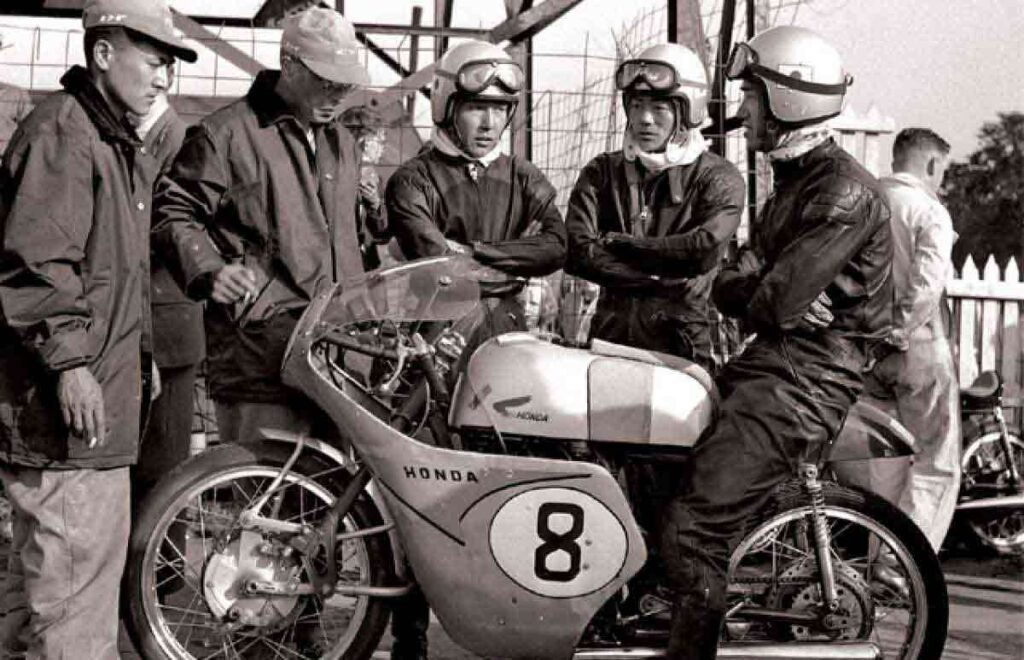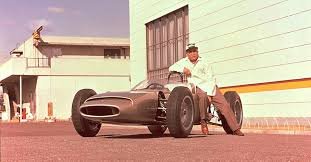Uncovering the Incredible Success Story of Soichiro Honda
The Early Years of a Visionary (1906-1922)
Born in 1906 in a small village near Mount Fuji, Soichiro Honda was a businessperson with a passion for machines. His mother was a weaver, and his father used to run a bicycle repair business. From an early age, he helped in his father’s business and was fascinated by how things worked, often taking apart vehicles just to understand their mechanics. This curiosity shaped his genius and set him on a path to becoming an inspiring legend in the automobile industry.
At the age of 15, he left school and traveled to Tokyo, where he was apprenticed as a trainee mechanic in 1922. For six years, he trained under experienced engineers before returning home to start his garage.
The First Innovative Step (1923-1948)
At the age of 16, Soichiro Honda left his home in Tokyo to find a job. It wasn’t difficult for him to get his first job, as he quickly began working at an automobile shop. He spent six years there, sharpening his skills during the day shifts and working on his projects at night. His passion led him to design a racing car and save enough money to establish Tohai Seiko, a company focused on manufacturing piston rings.
In 1937, he founded Honda’s first company, Tokai Seiki, to produce piston rings. The company grew but later suffered losses due to wartime bombing raids and a devastating earthquake in quick succession. The shattered remnants of his business were sold, and with the proceeds, he started the Honda Technical Research Institute in 1946. After post-war Japan needed cheap and quick mobility, he came up with the idea of retrofitting surplus generator motors to bicycles, making his first Honda motorcycle. His success in the automotive industry continued as he pursued his dream of building a line of vehicles. By 1948, he founded Honda Motor Ltd to produce affordable, high-quality motorcycles.
Growing Fast, Going Global (1950s-1980s)
In the 1950s, Honda was determined to expand beyond Japan. By 1955, the company became the biggest motorcycle brand in the country. Its rapid success was fueled by a strong global viewpoint, with a commitment to producing high-quality products at a reasonable price. The company’s philosophy, established in 1956, emphasized the need to think global, act local, ensuring customer satisfaction worldwide. With production facilities across the globe, Honda set the foundation for becoming the number-one motorcycle brand in the world.

By the 1960s, Honda became the largest manufacturer of motorcycles. The company then expanded into automobiles in the 1970s, making Honda a major player in the global automotive industry by the 1980s. His commitment to innovation and sustainability ensured that Honda’s products were sold in many countries worldwide.
That Winning Feeling (1960s-1967)
In the 1960s, Soichiro Honda’s passion for innovation led to the creation of a dedicated R&D company, a sister firm to Honda Motor Co., Ltd. This was his dream factory, where ideas took shape. By 1961, Honda entered the Isle of Man TT races, but its debut was a disappointment. However, true to Honda’s belief that success is 99 percent failure, they refused to give up. Just two years later, they returned and dominated.
By 1965, Honda was already making history in F1 Grand Prix racing, securing victories and proving its engineering prowess. Honda’s global production efforts also took off in 1962, with the opening of an overseas facility in Aalst, Belgium, to meet the growing demand for motorcycles in Europe. By 1963, the company expanded from two wheels to four, launching the T360 mini-truck and the S500 sports car.
Honda’s racing ambition continued in 1964, as they took an audacious step by entering motor racing with their chassis and engine. Their decision was rewarded in 1965 when Richie Ginther secured Honda’s maiden victory in Mexico. The success kept rolling in, and in 1967, Honda introduced the N360 city car, a tiny yet clever miracle that featured a sweet-revving air-cooled engine, marking the start of its passenger car success story.
The secret behind Honda’s success was his unwavering commitment to innovation and continuous improvement. He was never satisfied with the status quo, believing that there was always a way to make things better. He encouraged his employees to adopt the same mindset, taking risks and pursuing passions, even when faced with doubt.
As he famously said, “Success represents the 1% of your work which results from the 99% that is called failure.” His belief in teamwork and collaboration fostered a culture of cooperation and mutual support, leading to the development of groundbreaking technologies that transformed the automotive industry.

The Lasting Impact of Soichiro Honda on the Auto Industry (1980s-1991)
Even after his passing in 1991, Honda’s legacy lives on. His name remains synonymous with reliability and innovation, and his vision still shapes the auto industry today. His belief in continuous improvement, teamwork, and collaboration helped entrepreneurs worldwide understand the value of perseverance.
He was a remarkable man who proved that success isn’t just about ideas—it’s about having the commitment and effort to turn them into reality. His lessons continue to influence not just the world of cars, but also the mindset of those determined to leave their mark on history.
Conclusion:
The Enduring Legacy of Soichiro Honda
Soichiro Honda’s journey from a small village near Mount Fuji to building a global automotive empire is a testament to his unwavering determination, innovation, and resilience. Despite facing numerous obstacles, failures, and setbacks, he never gave up. His ability to learn from mistakes and persist through challenges turned his vision into a reality that continues to shape the modern auto industry.
His commitment to affordability, quality, and technological advancement made Honda a household name worldwide. Even after his passing in 1991, his legacy lives on, inspiring entrepreneurs and dreamers to take risks, think outside the box, and strive for excellence. Soichiro Honda’s story proves that true success comes from hard work, passion, and the courage to innovate.

